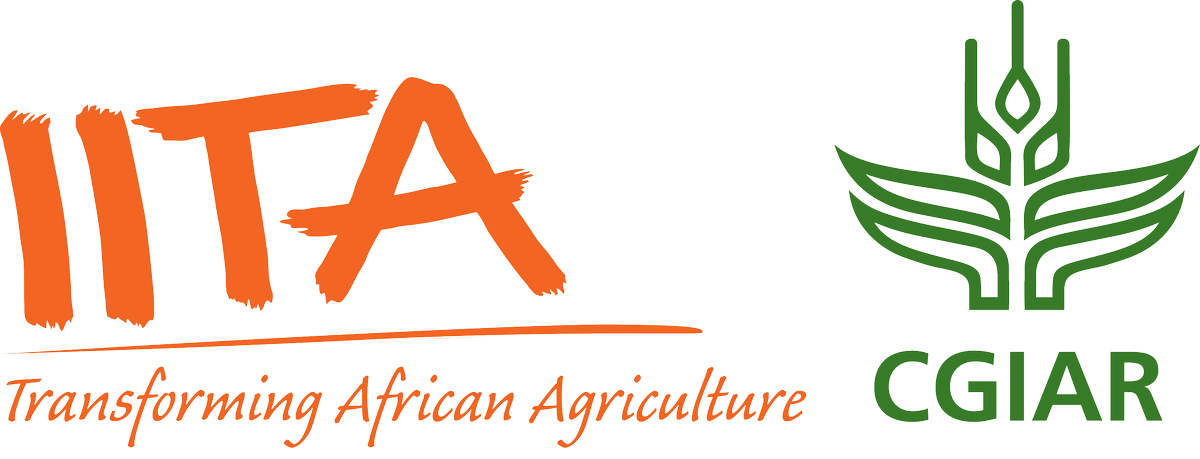| dc.contributor.author | Olasanmi, B. |
| dc.contributor.author | Abioye, O. |
| dc.contributor.author | Olorode, B. |
| dc.contributor.author | Peters, G. |
| dc.contributor.author | Udemba, I.O. |
| dc.contributor.author | Adiga, S. |
| dc.contributor.author | Banwo, O. |
| dc.contributor.author | Akande, A. |
| dc.date.accessioned | 2024-11-06T13:15:51Z |
| dc.date.available | 2024-11-06T13:15:51Z |
| dc.date.issued | 2023-07 |
| dc.identifier.citation | Olasanmi, B., Abioye, O., Olorode, B., Peters, G., Udemba, I.O., Adiga, S., ... & Akande, A. (2023). Training of trainer manual for production of Orange Fleshed Sweetpotato (OFSP): planting to harvesting. Ibadan: IITA, (p. 23). |
| dc.identifier.isbn | 978-978-782-345-3 |
| dc.identifier.uri | https://hdl.handle.net/20.500.12478/8634 |
| dc.description.abstract | Sweetpotato (Ipomoea batatas) originated in Central America or north-western South America from where it was introduced to Europe, Africa, Asia and North America in more recent times. Sweetpotato is now cultivated in nearly all parts of the tropics and sub-tropics as well as in the warmer parts of the temperate regions (CIP, 2019). This is because Sweetpotato is a dry-land crop, tolerant to a wide range of edaphic and climatic conditions. It is more tolerant of cold than other tropical root and tuber crops, hence, it can be grown at altitudes as high as 2500 m. China is the highest producer of Sweetpotato in the world, followed by Malawi, Tanzania and Nigeria (FAO, 2023). In more than 100 developing countries (including Nigeria), Sweetpotato is a smallholder crop grown with limited inputs on marginal soils. The yields in these developing countries are therefore far below the average for developed countries. Sweetpotato is a rich source of calories, fibre, micronutrients and vitamins when consumed. Its bio-fortification (as a means of addressing Vitamin A Deficiency (VAD) through nutrition based approach) led to the development and release of Orange Fleshed Sweetpotato (OFSP). Orange Fleshed Sweetpotato (OFSP), rich in β carotene (pro-vitamin A), is one of the well established and documented bio-fortified crops in Africa. It is the only biofortified crop providing up to 100% of daily vitamin A requirements when consumed (Bouis and Saltzman, 2017). Just 125 grams of most OFSP varieties can supply the recommended daily allowance of vitamin for children and non-lactating women (300-700μg RAE). According to Ezeocha, et al. (2010), OFSP are naturally biofortified with β carotene. Its consumption has been reported to improve vitamin A status in children. It can serve as a feasible long-term food-based strategy for controlling VAD in children in developing countries (van Jaarsveld et al., 2005; Korieocha et al., 2009). Strengthening the value chain (production, processing, marketing, and consumption) of OFSP in Nigeria is a key opportunity for addressing malnutrition and improving rural livelihoods. Leaves and peels of OFSP can be fed to animals thereby reducing cost of production of such animals. These can generate additional source of income for the farmers. |
| dc.format.extent | 23 p. |
| dc.language.iso | en |
| dc.publisher | IInternational Institute of Tropical Agriculture |
| dc.subject | Sweet Potatoes |
| dc.subject | Micronutrients |
| dc.subject | Smallholders |
| dc.subject | Vitamins |
| dc.subject | Sub-Saharan Africa |
| dc.title | Training of trainer manual for production of Orange Fleshed Sweetpotato (OFSP): planting to harvesting |
| dc.type | Manual |
| cg.contributor.crp | Roots, Tubers and Bananas |
| cg.contributor.affiliation | National Root Crops Research Institute, Nigeria |
| cg.contributor.affiliation | International Institute of Tropical Agriculture |
| cg.coverage.region | Africa |
| cg.coverage.region | East Africa |
| cg.coverage.region | Southern Africa |
| cg.coverage.region | West Africa |
| cg.coverage.country | Malawi |
| cg.coverage.country | Nigeria |
| cg.coverage.country | Tanzania |
| cg.coverage.hub | Headquarters and Western Africa Hub |
| cg.researchtheme | Biotech and Plant Breeding |
| cg.identifier.bibtexciteid | OLASANMI:2023 |
| cg.authorship.types | CGIAR and developing country institute |
| cg.iitasubject | Agronomy |
| cg.iitasubject | Biofortification |
| cg.iitasubject | Crop Systems |
| cg.iitasubject | Food Security |
| cg.iitasubject | Livelihoods |
| cg.iitasubject | Plant Breeding |
| cg.iitasubject | Plant Production |
| cg.publicationplace | Ibadan, Nigeria |
| cg.accessibilitystatus | Open Access |
| cg.reviewstatus | Peer Review |
| cg.usagerightslicense | Creative Commons Attribution 4.0 (CC BY 0.0) |
| cg.targetaudience | Scientists |
| cg.iitaauthor.identifier | A. AKANDE: 0000-0002-6521-3272 |
| cg.futureupdate.required | No |

